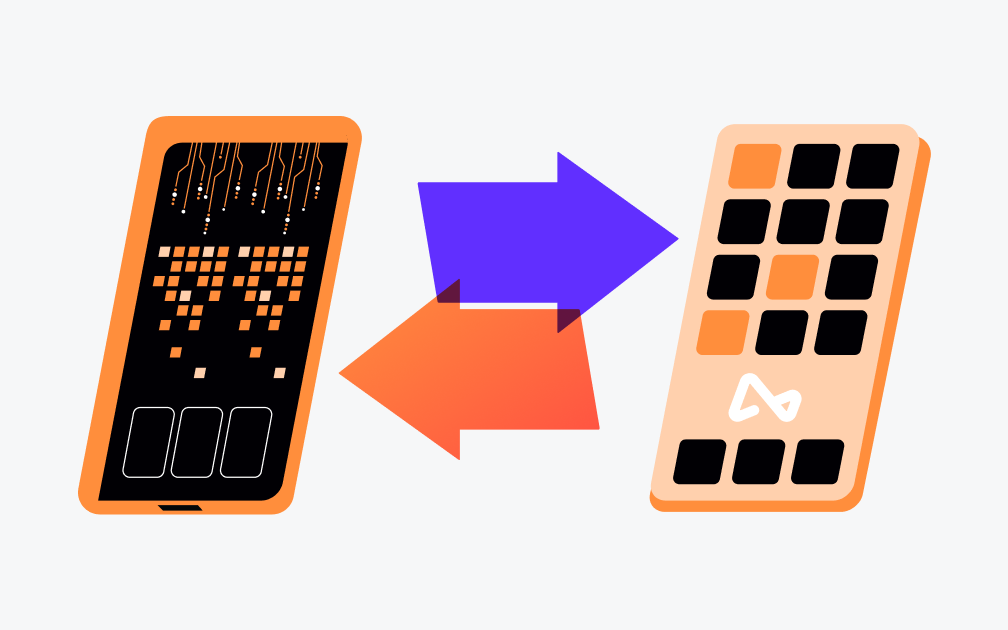What is an international bank account number (IBAN)?

- •What does an IBAN look like?
- •Where can I find my IBAN?
- •Which banks use IBANs?
- •Is it safe to share your IBAN number?
- •Why were IBANs introduced?
- •SWIFT/BIC code vs IBAN, what’s the difference?
- •What is SEPA?
- •How much does it cost to send money with an IBAN?
- •Try Airwallex for faster and more efficient global payments
An international bank account number (IBAN) is a standardised number used by financial institutions to identify individual bank accounts when processing international payments. If you are sending or receiving money overseas, you may need to provide yours and/or your recipient's IBAN to complete the transaction. Your IBAN is separate to your account number, sort code and SWIFT code.
Not all bank accounts come with an IBAN. For example, banks in the US, China, Australia and New Zealand do not use IBANs, but instead use a routing number as well as a SWIFT code (otherwise known as a BIC code) when processing wire transfers. IBANs are most commonly used in Europe.
What does an IBAN look like?
An IBAN number can be up to 34 characters long and contains both numbers and letters. The length of your IBAN number depends on the geolocation of your bank account. Here are some examples of IBAN lengths across Europe:
United Kingdom: 22 characters
France: 27 characters
Germany: 22 characters
Italy: 27 characters
Switzerland: 21 characters
Spain: 24 characters
Norway: 15 characters
Each IBAN is comprised of the following codes:
Country code: Each country that participates in the IBAN system has its own country code.
Check digit code: This code is assigned by the bank or financial institution where you hold your account. This code allows the sending bank to perform a sanity check on the IBAN and ensure it contains no errors.
Bank identifier code: This code identifies the bank or financial institution where you hold your account.
Branch code: Also known as a sort code, this code identifies the bank and branch where you hold your account.
Account number: This code identifies your individual bank account, and is unique to your account.
The bank identifier code, branch code and account number together make up the Basic Bank Account Number (BBAN) that is used to identify your specific bank account when you make an international bank transfer.
The IBAN format is the same across countries, although the length of the alphanumeric characters vary for each country. Here is an example of what a UK IBAN looks like:

Where can I find my IBAN?
You can find your IBAN on your bank statements or in your banking app if you use online banking. If you’re having trouble finding your IBAN, you can call up your bank or use an IBAN checker or IBAN calculator.
Which banks use IBANs?
The IBAN system is most commonly used by countries in the eurozone although some countries outside of the eurozone do use IBANs, including the United Arab Emirates (UAE), Israel and Ukraine (to name a few). You can see a full list of countries that participate in the IBAN system in the IBAN registry, which is published by SWIFT.
Other countries use their own systems for making domestic and international transfers. For example, US banks use ABA routing numbers for domestic transfers and SWIFT codes for international transfers. If your country does not participate in the IBAN system, you will only use an IBAN when sending money to an overseas bank account that does participate in the IBAN system.
Is it safe to share your IBAN number?
Yes, it is safe to share your IBAN number with third parties. In fact, if you have an IBAN, you will need to share it in order to be paid by a business or individual with an overseas bank account. IBAN numbers can only be used by third parties to transfer money into your account, not to take money out of it, so you need not be concerned about sharing these details.
The account details you should be wary of sharing are your CVV, credit or debit card expiry date and the 16-digit number printed across your card. These details can be used to take money out of your account and should only be shared with trusted vendors when making secure payments.
Why were IBANs introduced?
Before IBANs were introduced, European countries all used different bank account number formats, which led to errors, delayed payments and extra costs when processing international transfers.
In 1997, the International Organisation for Standardisation (ISO) published ISO 13616:1997 in an effort to standardise European bank account numbers for international transfers. Latterly, the European Commission for Banking Standards (ECBS) produced an updated version of this standard. The most recent version is ISO 13616-2:2007.
IBANs were designed to allow for easy validation on the point of data entry, thereby eliminating errors that could lead to delays and additional costs to customers.
SWIFT/BIC code vs IBAN, what’s the difference?
People often confuse their SWIFT code (also known as a BIC code) with their IBAN because both numbers are used when transferring money internationally. The difference between a SWIFT code and an IBAN is simple: IBANs are used to identify your unique bank account, SWIFT codes are used to identify your bank.
SWIFT stands for The Society for Worldwide Interbank Financial Telecommunications. The SWIFT network is a messaging system used by financial institutions to process global money transfers. Your SWIFT code contains 8 - 11 alphanumeric characters, and can be found on your bank’s website and in your online banking app. If you cannot find your SWIFT code, you should contact your bank. SWIFT codes are sometimes called Bank Identifier Codes or Business Identifier Codes (BIC), these terms are interchangeable.
The SWIFT system predates the IBAN system and is the network through which most international money transfers are made. However, because SWIFT codes are not unique to each bank account, financial institutions will request that you provide additional account details when making an international transfer. This information may include your IBAN, if you have one.
What is SEPA?
The Single Euro Payments Area (SEPA) is a network that facilitates the transfer of euros across 36 participating countries both in and outside of the European Union (EU). The SEPA payment system facilities both credit transfers and direct debit.
You will need to provide your IBAN and SWIFT code in order to make a SEPA payment. Not all European banks are SEPA members, so you will need to check if your bank is a member before making a SEPA payment.
How much does it cost to send money with an IBAN?
IBANs are used for international transfers, so the amount it costs you to send money will vary depending on a number of factors, including which system you use (the SWIFT network, SEPA or alternative payment services such as Airwallex), and whether you need to convert currencies.
Airwallex was designed to offer a fast, secure and cost-efficient way for businesses to internationally transfer money. With our Global Accounts, you can send money around the world with no international transaction fees and market-beating exchange rates. 80% of our transfers clear in one day, so you can be sure your money will reach its destination fast.
Try Airwallex for faster and more efficient global payments
For a better way to manage money globally, try Airwallex. With our multi-currency business accounts, you can pay international suppliers and staff securely and accept payment from your global customers without the high fees or long delays.
Collect and send money globally with no international transaction fees and market-beating exchange rates of 0.5 - 1%. And use our Borderless Cards to spend in multiple currencies whilst avoiding FX fees.
For more information, sign up free today or speak to one of our specialists.
Airwallex is regulated by the Financial Conduct Authority and holds an Electronic Money Institution Licence. Our security systems and procedures are based on the highest international standards including PCI Level 1 compliance.
Expanding to new markets? Instantly create accounts in 60+ countries.
Related articles about international expansion:
Share

Tilly manages the content strategy for Airwallex. She specialises in content that supports businesses in their growth trajectory.
View this article in another region:AustraliaCanada - EnglishCanada - undefinedEurope - EnglishEurope - NederlandsNew ZealandSingaporeUnited StatesGlobal
Related Posts

What is the SWIFT banking and payment system? How it works in 3 s...
•6 minutes
